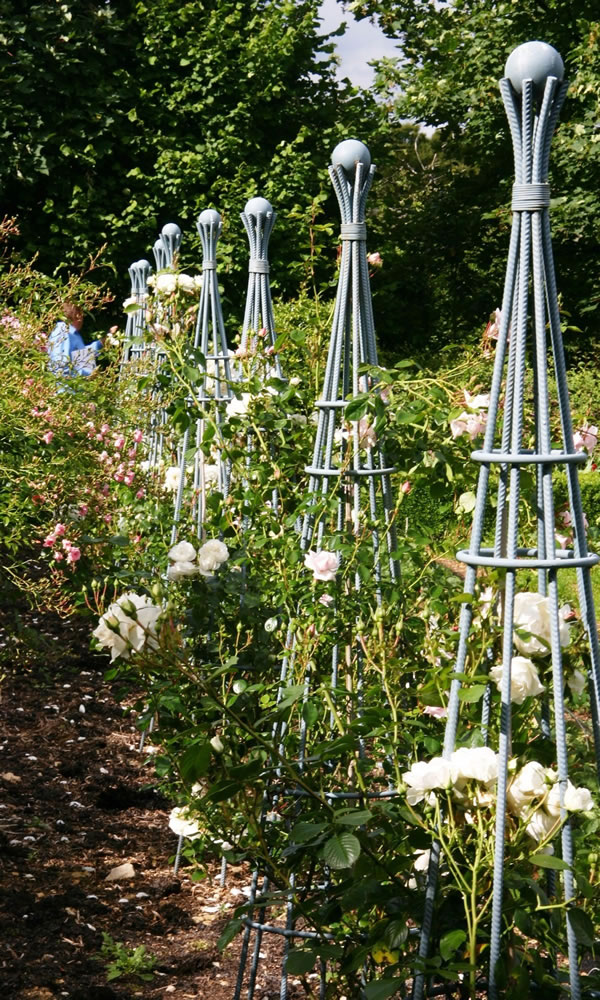After a rough winter, most garden plants take longer to come out of dormancy than usual.
The new leaves of barberry and spirea unfold in shades of spring green, yellow, orange and burgundy. Perennials emerge from the ground in an assortment of guises. Lilies shoot up thick spikes, sedums form miniature rosettes and the rhubarb opens from a knot of crumpled foliage.
The pleasure of recognition is especially relevant to those with established
gardens. Part of the gardening thrill is that every spring reiterates one surprise after another. Then again, after two difficult winters, even long-established plants can suffer severe damage and need to be replaced. Even the most astute gardener, who knows every plant in the garden, will occasionally be surprised by spring’s bounty. New gardeners begin to establish garden memories in spring by planting now for the seasons to come.
In spring, spireas step out of the border background. Local nursery specialists have had a field day with the newer varieties. They cultivate interesting spring and fall leaf color as well as long-lasting clusters of flat-headed flowers in summer. “Golden Sunsation” (Berberis thunbergii) is a compact shrub. The attractive golden foliage carries an orange cast throughout the season. B. “Aurea” has pink flowers that stand out stark against the pale, chartreuse leaves.
ooo
Japanese maples are not typically recognized for their spring flowers but the leaves of each named variety are as different from each other as a daisy from a rose. The new leaf of Full Moon Maple (Acer shirasawanum) is chartreuse in the shade, golden in sunlight. They unfold from yellow buds and in one day spread wide open, almost to a full circle, in the manner of a Japanese fan. Acer “Orangeola” sends out rusty red leaves and A. “Waterfall” is a classic spring green.
The weeping maples (Acer palmatum dissectum) make a distinct impression through the winter months with arching stems and an intricate design of geometric branching. In spring, the new leaves expand as if filling in the pieces of a jigsaw puzzle. Within days the gaps are filled with overlapping leaves and the tree takes on a solid, decoupage form.
Although the term dissectum is a reference to the deeply cut lace leaf of this variety, many think the name refers to a plant’s dwarf size. It does not. However, the branches of dissectum maples naturally weep down, which is typical of many of the smaller Japanese maple varieties. They are usually wider than tall. The term dwarf only refers to the plants size in relation to other plants in the category. A dwarf tree can be very large. It’s important to always check a plant’s ultimate size before buying.
ooo
You have probably heard the term “heavy feeder” in reference to certain plants. Roses are the classic example. Very simply, to keep your roses blooming over a long season you will need to feed them. The first application should be made in early spring and the last sometime in midsummer so the plants have a chance to harden off before winter.
One method is to fertilize about every six weeks with an all-purpose rose food. You can also use a slow-release fertilizer just once or twice a season. Be sure to water before and after fertilizing. Organic fertilizers for roses include kelp and fish emulsion. These work well in conjunction with a layer of compost to help maintain moisture in the soil.
ooo
As long as you can guarantee a good supply of water and nutrients to the vegetable garden, you can add a new crop of lettuce and spinach as well as cauliflower and broccoli for fall harvest in the vegetable garden. Try a mixed planting of leafy vegetables in an array of colors and leaf textures that will wow garden visitors and dinner guests alike. Remember to add nasturtiums to that salad.
Blueberries, on the other hand, produce such a large crop at one time that it pays to invest in bird netting. Drape it over stakes that hold the netting at least a foot from the plant so birds cannot reach in and pick fruit through the netting.
Robb Rosser is a WSU-certified Master Gardener. Reach him at Write2Robb@aol.com.



